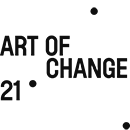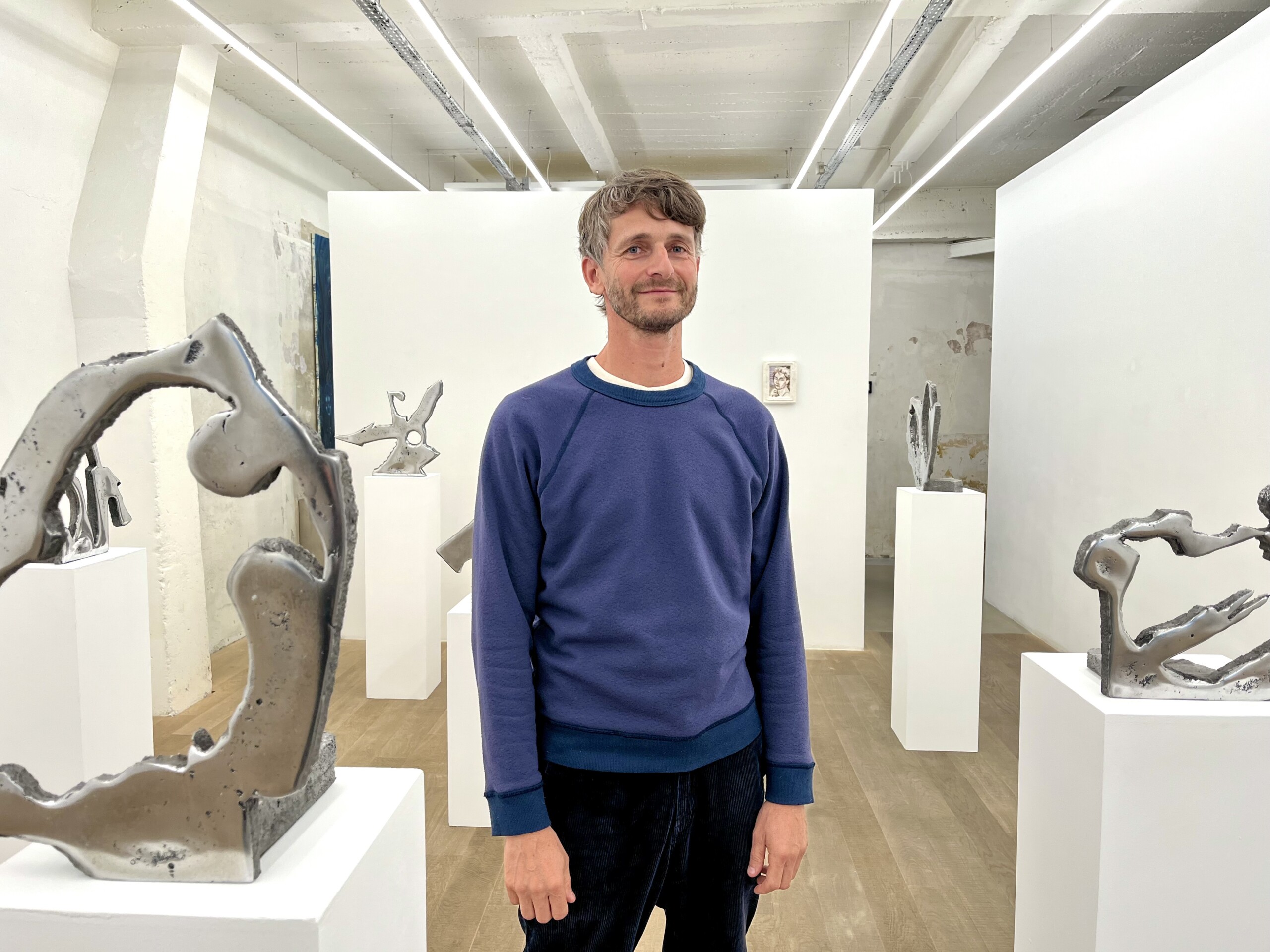The visual artist and surfer Olivier Millagou has chosen a frugal lifestyle by the sea, near Toulon, deliberately far from the artistic centralism of Paris. His solo exhibition Free and Easy, whose title is inspired by an old surf movie, may initially seem to embody the Parisian cool vibe, championing feel-good and vintage aesthetics. However, it turns out to be a rigorous demonstration of an ecological approach to creation, on display until October 11, 2025, at the Sultana Gallery in Paris.
The artist created all the works for this exhibition based on a principle of economy of means, showcasing their poetic potential. Free and Easy advocates values dear to the artist: “sobriety, by limiting the consumption of raw materials and energy as well as the number of actions; circularity, by reusing production waste and materials at the end of their life; and inclusivity, by celebrating a culture accessible to all audiences.
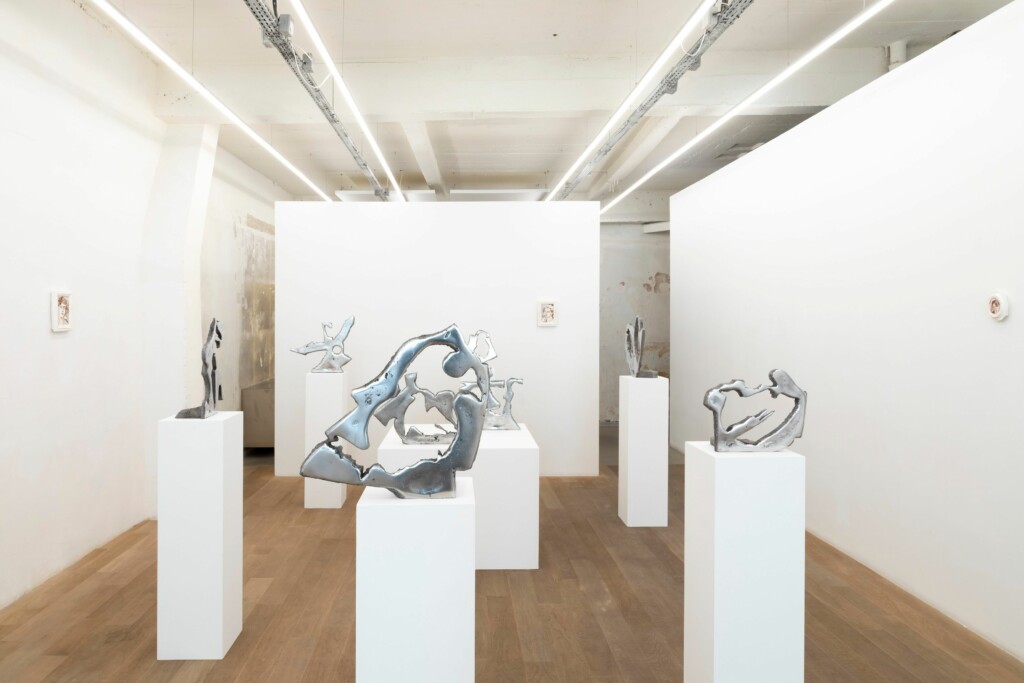
Ecological Initiatives During the Creation of the Works
Millagou made a point of avoiding the extraction of new resources as well as the burial or incineration of waste. To achieve this, he not only used only waste materials but also adapted the number of works produced and presented to the amount of waste he had available. Thus, in this exhibition, the number of sculptures in the “Réemploi” series is limited to 9, and the number of paintings in the “Peintures Périmées” series is limited to 7.
The main materials used to create the works for this exhibition—polyethylene PE foam and aluminum (which are not eco-friendly in themselves)—are leftovers from an artistic commission for the University of Lyon in Villeurbanne, which was also created by the artist using waste from a construction project for a building.
For the casting of the sculptures in the “Réemploi” series, the material comes from these previous creations representing bird silhouettes. For these new sculptures, the artist assembled the remaining contours of the works, which gives the birds a subtle presence, not immediately apparent at first glance. The lost-wax process was replaced by reclaimed polyethylene PE foam. The casts were made in wooden crates originally used for a museum set design. The sand used to make the molds was reused for all the sculptures and will be used again for future works. The back of the sculptures is left raw, straight from the casting, while the front is ground, sanded, and polished as simply as possible. The sculptures are not monumental but rather small in size to ensure they are easily transportable.
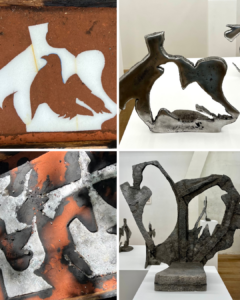
The materials that make up the “Peintures Périmées” series are expired polyurethane glue and the remnants of acrylic paint tubes. The silicone molds used are the same ones that were employed in the previous exhibition. These expired materials are collected from trash bins or from artisans. The painted faces and gazes are designed at human height, like watchful sentinels or angels paying close attention to the visitors.
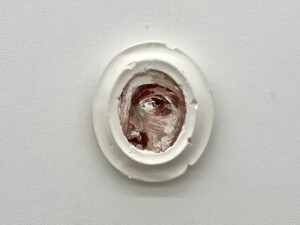
All of these works were created in a shared studio in Marseille, where the artist traveled by train from his home.
A Continued Action at the Scale of the Exhibition
Regarding the exhibition, the works were first transported by train from the artist’s studio in Marseille to Bandol. From Bandol, they were then brought to Paris by train as well, in the suitcases of friends who were visiting (simply wrapped in clothing, without crates).
For the exhibition’s scenography, the plinths come from previous exhibitions at the gallery.
The graphic elements of the exhibition, like the title, are borrowed from a 1967 film. Once again, the intention is to use and enhance what already exists.
In case of acquisition and delivery, the airplane will be avoided, and no crates will be used for transportation; the works will be wrapped in recovered moving blankets.
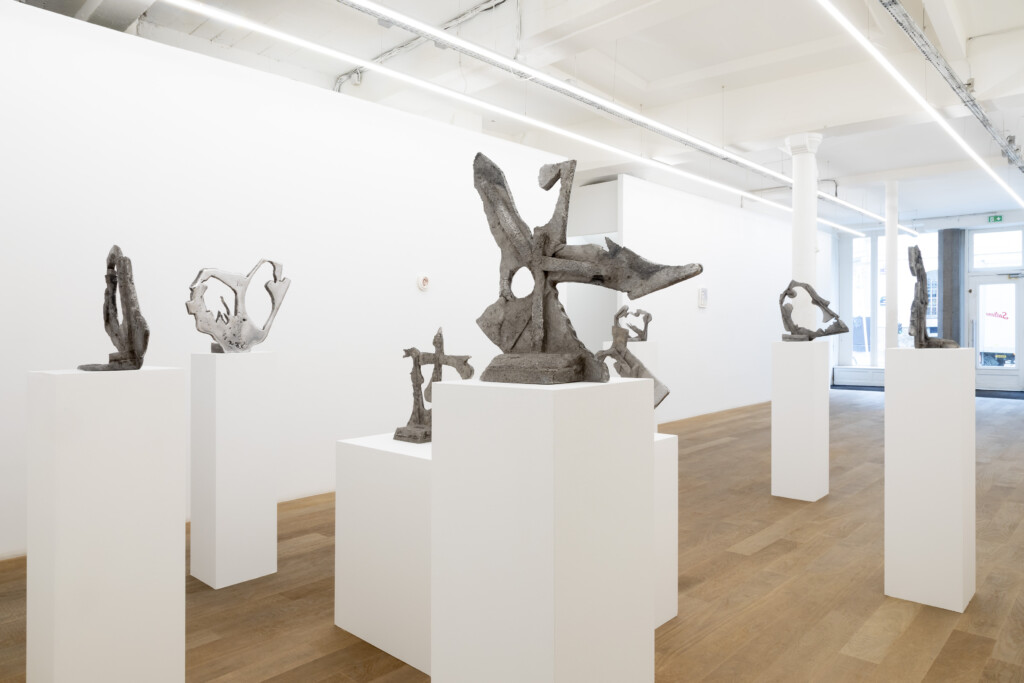
This way of thinking and creating is not new for the artist, who draws inspiration from his surfing practice, which he sees as a lesson in humility and simplicity. In an interview with Art of Change 21 last November, he expressed his desire to move toward more limited production:
“My work has always been based on a form of localism, on researching within a reduced perimeter — something I’ve been trying to narrow more and more for over 12 years now, to better highlight this surfing principle of making do with what surrounds us. This voluntary reduction in production is, for me, a philosophy of life.”
A finalist in 2024 and 2025 for the Eco-design Art Prize (Prix Art Eco-Conception) by Art of Change 21, the artist is also involved in a project that aims to make “deplasticization” a rallying cause comparable to decarbonization, alongside his friend and collaborator, Toulon-based eco-designer Antoine Boudin.
Galerie Sultana, long committed to social issues under the leadership of its founder Guillaume Sultana, is no stranger to environmental engagement. The gallery is currently preparing the second chapter of a manifesto exhibition on the theme of waste, in collaboration with artist and designer Harry Nuriev — now is the time to bring in your own!
Free and Easy
Olivier Millagou
6 Sep – 11 Oct 2025
Galerie Sultana
75 rue Beaubourg, Paris, France
Read here our conversation with d’Olivier Millagou, November 2024, by Alice Audouin et Eliza Morris
Art of Change 21 Journal
(ex Impact Art News)
September 2025
Author: Alice Audouin
Translation (French to English): Juliette Soulez
Pictures : @artofchange21 @oliviermillagou @galeriesultana
